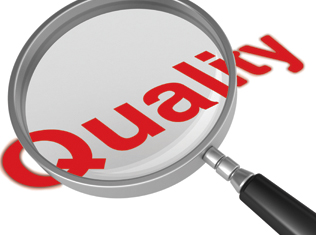Generics: No end of frustration
In Practice
Follow this topic
Record learning outcomes
Generic medicines increasingly account for the bread and butter of NHS prescribing €“ but supply issues continue to frustrate pharmacists. Steve Bremer reports
Generic medicines accounted for over three-quarters of all NHS prescriptions in England and Wales during 2013, saving the NHS nearly £12.3bn a year (compared to just under £11bn in 2012).
Last year's increase in generic prescribing was driven in part by the ongoing impact of several large originator products losing patent protection. Generic atorvastatin delivered the greatest cost reduction of any medicine over the period, down from £166.6m in 2012 to £42.4m in 2013.

Atorvastatin prescription numbers consequently rose from 12.8m in 2012 to 18.3m in 2013. Generic competition allowed over 40 per cent more patients to receive atorvastatin, while reducing the cost to the NHS by almost 70 per cent. €This is the perfect example of generic competition in practice,€ says Warwick Smith, director general of the British Generic Manufacturers Association (BGMA).
€Large savings to the NHS coupled with more patients being able to access high quality, life-enhancing drugs. In addition, [generics] drive innovation as the savings provide the platform for further research and development into the next generation of critical, life-saving medicines.€
Market factors
The UK generics market continues to be one of the most competitive and lowest-priced in the world, but increasing specialism and greater regulatory costs are influencing its operation, says Smith. Historically, the industry focused on simple products in a commodity market. Prices were low, driven by competition between several manufacturers for most products, and barriers to entry were also low. Now manufacturers are looking to provide added value for patients (e.g. by offering different formulations such as sustained-release and patch systems), which takes the products out of a commodities market and increases manufacturer costs.
Over the next two years the Falsified Medicines Directive will force manufacturers to invest in new IT, printing and production lines. Increasing intervention from the European Medicines Agency (EMA) is also adding costs €“ for example, a single prescribing guidance notification can cost £70,000 to issue.
In addition, the 'Sunset Clause' is now starting to have an impact on the market. This legislation, which came into force three years ago, means that if a manufacturer does not market a product for three years it loses the licence. The over-supply of generic medicines that has existed for the past six years may be about to come to an end, says Smith, although this highly fluid market can be extremely difficult to predict. It often needs a €perfect storm€ of different issues to coincide before any differences are noticeable.
A reduction in service delivery from manufacturers and wholesalers saw the number of orders that BGMA members fulfilled on time and in full drop from around 93-95 per cent to just below 90 per cent during the first quarter of this year. This was caused mainly by two manufacturers temporarily ceasing production of a number of products for regulatory reasons.
In terms of absolute shortages, there has been a problem with valsartan because of a supply issue with the active pharmaceutical ingredient (API) to the market leader, but stock levels are now starting to build up again. Over the past two quarters, service levels have returned to €the early 90s€ per cent.
Following this period of tightening of supply and rising costs, Smith expects to see prices stabilising €“ but whatever happens to market prices, he says pharmacists should remember that the category M mechanism protects their profits for most commonly used generics.
Ongoing problem
Generic shortages pose an €ongoing and significant problem€ for pharmacies in England, who are spending a lot of time trying to source medicines for patients, says Komal George, head of support services at PSNC. Since January, over 50 per cent of products on concession had their prices more than doubled and over a third had at least a five-fold increase, with 2 per cent of lines seeing increases 17-fold or above.
Figure 1 shows the number of lines that have been granted price concessions since July last year. €This gives an indication of the increase in generics shortages over recent months, but it doesn't demonstrate the extent to which pharmacies are struggling to obtain a much longer list of generic lines,€ says George. She points out that, even if a small number of high volume lines are affected, the impact on pharmacies, from both a workload and financial perspective, can be significant. And it can be difficult to assess shortage levels because situations vary by region and change continually; it is only ever possible to get a snapshot of what is happening.
PSNC welcomes the Department of Health's move away from granting NCSO towards only granting price concessions, which are automatically applied, while NCSO claims require lengthy prescription endorsement. But some problems with the system remain, including:
€¢ It is reliant on market data from suppliers
€¢ It does not allow a concession for a product to be rolled over from one month to the next
€¢ Price concessions can be granted late in the month, after a pharmacy has had to purchase that product above the concession price.

Independents struggle
Reduced availability of products is having an impact, with independents facing the biggest challenges, says Mark Griffiths, chairman of Cambrian Alliance. €As with any commodity, a shortage of products pushes prices upwards and, as many independents are already under increasing financial pressures, this is an unwanted and unfavourable position to be in.€
While price concessions compensate to some extent for the increased costs, the time invested dealing with out-of-stocks cannot be replaced. €We know that many independents are struggling because of the time they have to dedicate to dealing with such problems and therefore are not buying as effectively as they could, further reducing profitability.€
The most assured way pharmacists can maximise their generic purchasing profits is with an automated ordering system, says Griffiths, who recommends his group's e-CASS2 system. €This PMR-based, price comparison, stock ordering tool finds the best prices for products across nine different suppliers. Importantly, when a product is out of stock, it automatically moves to the next lowest-priced supplier until the order is placed.
€We know that 98 per cent of pharmacies already using the e-CASS system have increased their profits and gained the equivalent of 10 additional days through the time saved.€
Numark continues to receive a number of calls from members finding it difficult to source generics in short supply, says its commercial manager for prescriptions, Sundeep Nagra. €Numark is constantly in contact with PSNC about these issues and keeps the NCSO/price concession list up-to-date on NumarkNet and in emails to members.€
During August, Numark's information services team fielded calls about alternatives to naproxen and valsartan and provided suggestions for alternative therapy and possible sources. These drugs have now been included in the NCSO list.
Biosimilars ready for take-off
Next year could mark a €turning point€ in biosimilar use, says BGMA's Warwick Smith. There are currently only three biosimilar products on the UK market but use is likely to be fuelled by the launch of the first monoclonal antibody products and influenced by NICE guidance on biosimilars, both of which are scheduled for next year.
Progress on encouraging biosimilar use has been €gradual and stepped€, says Smith, but tripartite working between BGMA, the Association of the British Pharmaceutical Industry (ABPI) and NHS England is helping to €remove their mystique€, which is expected to increase their use. €We're all very keen that the biosimilars will be understood by clinicians and used in the right way. They should all be prescribed by brand and pharmacovigilance should be carried out €“ but that's just good clinical practice.€
Biosimilars must be more cost-effective and NICE has no reservations about their use, as far as BGMA is aware. €Nobody I've ever spoken to in the NHS or outside has said 'we don't want this',€ says Smith. €Nobody sees any good reason not to use them.€

Quality forum
A new forum jointly launched by BGMA and MHRA has begun meeting on a triannual basis to discuss topical issues that affect the quality of generic medicines. Generic medicines companies, those who provide manufacturing and quality control services and MHRA are discussing issues such as the regulator's approaches to inspection, trends and the auditing that companies perform themselves.
€As regulatory requirements and supply chains become ever more complex, supporting high quality standards is vitally important for the pharmaceutical industry, patients and the value we deliver to the NHS,€ says Paul Fleming, BGMA's technical director. €From a generic medicines perspective we wanted to launch something that was closely aligned with the regulator in order to increase mutual understanding as well as share the latest information quickly and easily.€
The forum allows remedial action to be taken before any fallout occurs, says Warwick Smith. Its dialogue allows experience sharing between manufacturers as well as providing MHRA with €real world€ feedback. The forum has met once and is due to meet again in November.
